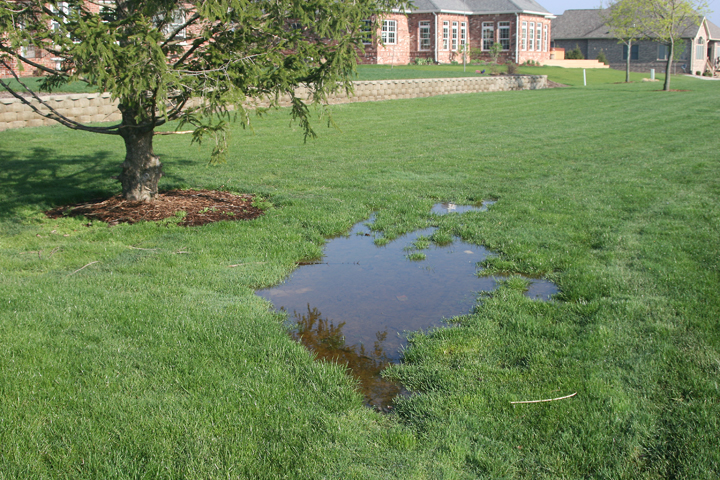
I received an email this week from an arborist colleague who had been sent an “engineering solution” which claims to help with rooting issues in clayey soils or areas where root area is reduced. There was a spiffy diagram accompanying this which I’ve reproduced below.

I could dissect this for you and point out all the problems right now, but instead I’d rather supply you with some factual information and let you apply it to this “engineering solution.”
- Planting hole material that is not the same as the surrounding soil will have reduced water, air, and root movement due to the abrupt changes in texture. The hatched material in the pit appears to be different from the surrounding soil, leading to the assumption we’ve got modified backfill. Here’s a peer-reviewed journal article that discusses the fallacy of soil amendment.
- “Augured sump drain/root channel bores” are simply modified French drains. French drains serve to move free water (i.e., water that is not in soil pores) somewhere. Where “somewhere” is in this case is unclear.
- French drains and other drainage systems do NOT reduce the amount of water that soil holds. Field capacity is the term used to describe a saturated soil. A sandy soil has a low field capacity and drains quickly. The higher the clay content of a soil, the higher the field capacity and the slower the drainage.
- “Drainage material” placed beneath the root zone will slow water movement and create a perched water table above the “drainage material.”
- Drains as well as soils that are full of standing water have no oxygen. Roots will not grow where oxygen is unavailable.

I don’t think I need to belabor these points any further. The bottom line is that you are going to create textural discontinuity problems in the planting pit if you follow these guidelines.
some tree nursery’s grow plants this way in giant pots. They have a horizontal drainage line that draws the water away to keep the ground from collecting water
This has me wondering – is a rain garden (in which soil is removed and replaced with a mixture of sand + mulch + native soil) essentially a perched water table? If not, how does it differ? I ask because I’ve just dug a rain garden and am wondering whether I have wasted a whole lot of time, money, and effort.
Yes. And why did you remove the soil?
Rain gardens are normally planted with native or non-invasive species that can be happy in the soggy conditions.